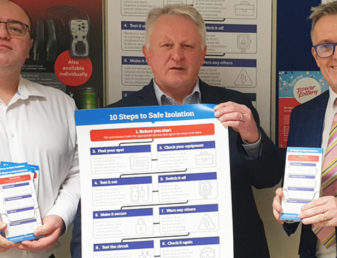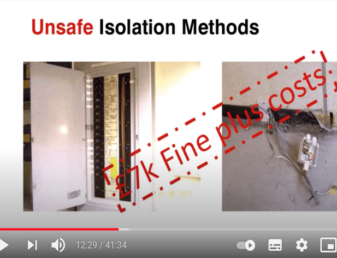The Electricity at Work Regulations 1989 expand on the rules regarding electrical safety in the Health and Safety at Work Act 1974. As with the HASAWA, employers are given duties and responsibilities to make sure that all work activity that uses or may be affected by electricity is done safely, and that all foreseeable risks are assessed and minimised as much as possible.
The regulations are not purely to prevent electric shocks, but also mean employers must take into account the suitability, design, construction and installation of electrical systems used for specific tasks in the workplace, where such systems are sited and the protection and precautions provided for the use of such systems.
In most workplaces, the most common use of the regulations is the PAT Testing of all electrical devices.
Why do they exist?
Electricity at Work regulations aim to prevent death or injury to any person from electrical causes while working or in a work environment. This can include electric shocks or burns, electric arching and fires or explosions started or caused by electricity.
Where do the Electricity at Work regulations apply?
The Electricity at Work regulations apply to every employer and self-employed person in a workplace, and every employee, who must co-operate with their employer by doing everything possible to ensure electrical safety is followed under the regulations.
What do electricians need to know?
At its simplest the regulations cover 13 main areas:
- Systems, work activities and protective equipment – all systems must be constructed, maintained and operated, as far as possible, to prevent any danger. Protective equipment, where necessary, must be supplied and well maintained.
- Strength and capability of electrical equipment –no electrical equipment should be used in a way where its strength and capability may be exceeded (eg overloaded) in a way that might become dangerous. This includes if it becomes faulty.
- Adverse or hazardous environments – electrical equipment which may be expected to be exposed to mechanical damage, the effects of weather, temperature, pressure, wet, dirty, dusty or corrosive conditions or flammable substances, must be constructed or protected to avoid danger arising from being exposed to these things.
- Insulation, protection and placing of conductors – All conductors in a system must be insulated and protected or have other precautions taken (for example placing them somewhere out of reach with warning notices) to prevent risk of danger.
- Earthing or other suitable precautions – Any conductors other than a circuit conductor which might become charged as a result of use or fault in a system must be earthed or otherwise suitably protected to prevent danger. Techniques for doing this include double insulation, equipotential bonding, use of safe voltages and separated or isolated systems.
- Integrity of referenced conductors – If a circuit conductor is earthed or connected to any other reference point, nothing which might give rise to danger by breaking electrical continuity or introducing high impedance should be placed in the conductor, unless suitable precautions are taken.
- Connections – Every joint and connection in a system must be mechanically and electrically suitable for use.
- Protection from excess current – Efficient means, suitably located must be provided to protect every part of a system from potentially dangerous excess electrical current. The regulations recognise that faults and overloads may occur on any system, but measures must be taken to protect against any short circuits or overloads.
- Means for cutting off the supply and for isolation – It must be possible to switch off the electricity supply to any piece of equipment in case of electrical danger. This can be by direct manual operation, circuit breakers or by stop buttons in control circuits of contactors.
- Precautions for work on equipment made dead – Precautions must be taken to prevent electrical equipment which has been made dead (whether temporarily so work can be done or permanently because the equipment is no longer in use) from becoming charged during that work.
- Work on or near live conductors – No-one should work on or near live conductors unless it is absolutely necessary and suitable precautions (including where necessary protective equipment) are taken to prevent injury.
- Working space, access and lighting – Adequate space, access and lighting must be provided around all electrical equipment where work is being done in order to minimise the risk of danger. Effectively this means any hazard needs to be suitably lit so it can be seen by people working in the area, and there needs to be enough space to work and pull back safely.
- Persons to be competent to prevent danger and injury – Employers must ensure only people who are fully trained or supervised undertake work relating to electrical systems to minimise the risk of danger or injury.
What is PAT Testing?
Portable appliance testing, or PAT, must be undertaken regularly (usually annually) by trained personnel, often specialist electrical contractors. It covers any equipment that can be moved – including computers, kettles, printers and mobile phone chargers. Usually, once an item has been tested it will have a small sticker placed on it with the date its next inspection is due.
There are three parts to the testing:
- Visual inspection (checking for damage to cable, plug and other components and checking the device is used in an appropriate place, where it won’t overheat for example)
- Earth continuity test (testing for earth continuity between the plug and the device)
- Insulation test (testing the cable for weakness and faults)
For more information on the Electricity at Work Regulations 1989 click here.






